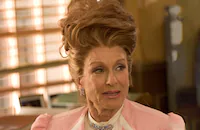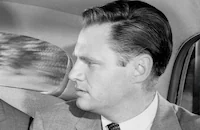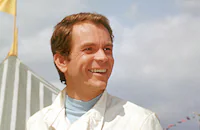By the mid-50s TV was swiftly becoming the movies' major testing ground for new talent such as Paul Newman, and The Rack (1956) is virtually a textbook example of this practice. It mirrors George Sanders sardonic (and prophetic) reply to Marilyn Monroe as she considers a TV audition in All About Eve: "That's all television is - auditions." Aside from Newman, the stellar cast contains a number of stage and screen luminaries, who were currently making themselves familiar to television audiences: Edmond O'Brien, Wendell Corey, and character actors Robert Simon, Adam Williams and Barry Atwater. Furthermore, The Rack was peppered with an unusually select group of thespians who would eventually become familiar to future moviegoers: Cloris Leachman, Robert Blake, Dean Jones, James Best, Lee Marvin and Rod Taylor. As for the director, the prolific Arnold Laven, he would make his name in 60s television - being one of the prime forces behind the popular Western series, The Big Valley (1965-1969). Most prominently, however, was the source material for The Rack, a teleplay by Rod Serling, who, along with contemporaries Paddy Chayefsky and Horton Foote, set incredibly high standards for television drama before moving on to feature films.
Although The Rack finished shooting before the Graziano picture, Metro wisely held up release until Somebody Up There Likes Me opened nationally, thereby confirming Newman's promise as a worthy rival to Brando, Clift and the late James Dean. With the release of The Rack, Newman received more critical acclaim and was able to distance himself a little more from his 1954 appearance in The Silver Chalice, a movie he personally detested. For MGM, The Rack would prove a profitable surprise, particularly later in TV syndication, where it became a perennial favorite during the 1960s and 1970s, mainly due to Newman's presence and the extraordinary supporting players, so many of whom came into their own during the subsequent two decades.
Producer: Arthur M. Loew, Jr.
Director: Arnold Laven
Screenplay: Stewart Stern
Cinematography: Nicolas Vogel, Paul Vogel
Film Editing: Harold Kress, Marshall Neilan, Jr.
Original Music: Adolph Deutsch
Cast: Paul Newman (Capt. Edward W. Hall, Jr.), Wendell Corey (Maj. Sam Moulton), Walter Pidgeon (Col. Edward W. Hall, Sr.), Edmond O'Brien (Lt. Col. Frank Wasnick), Anne Francis (Aggie Hall).
BW-101m. Closed Captioning.
by Mel Neuhaus





































